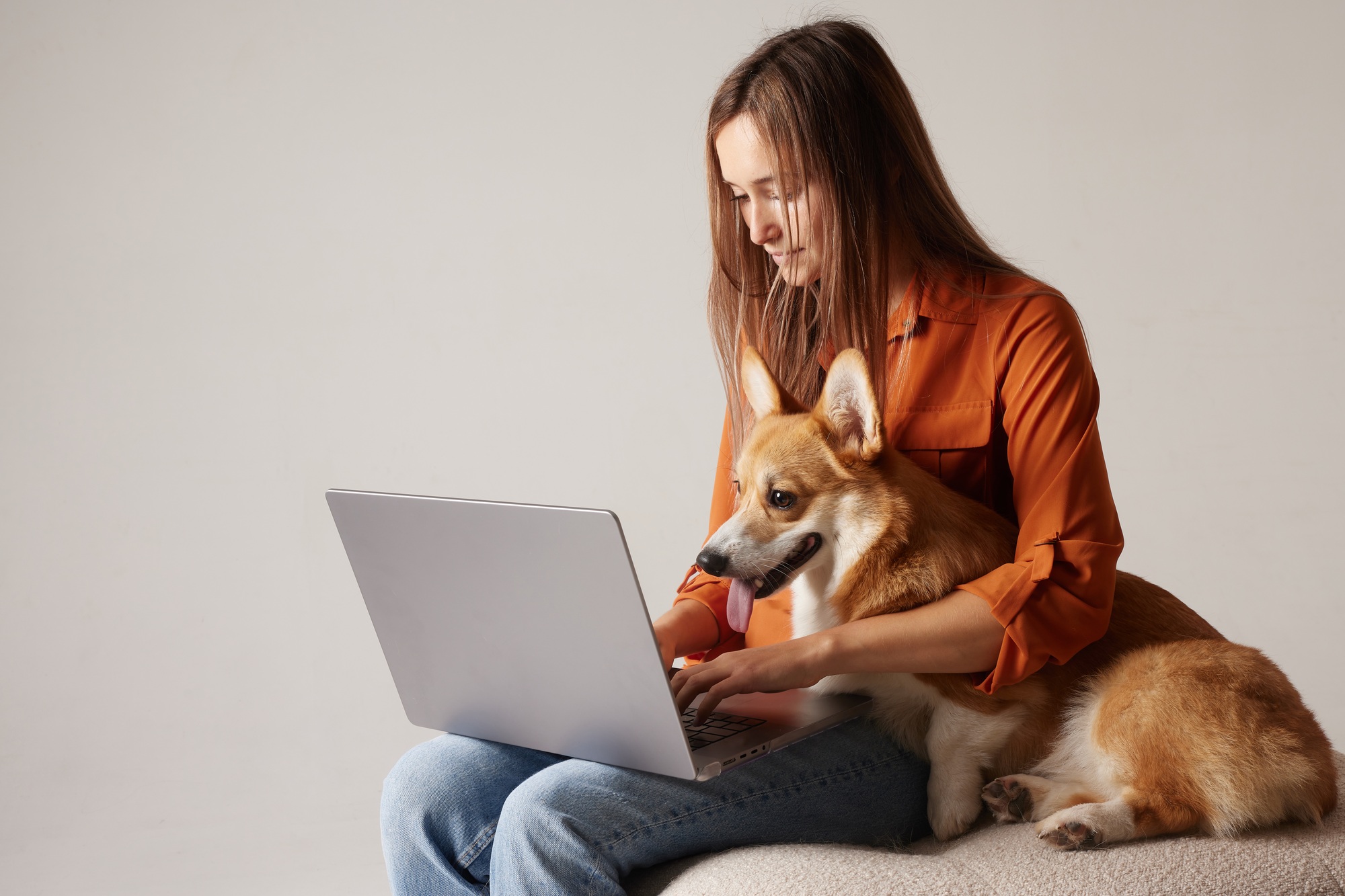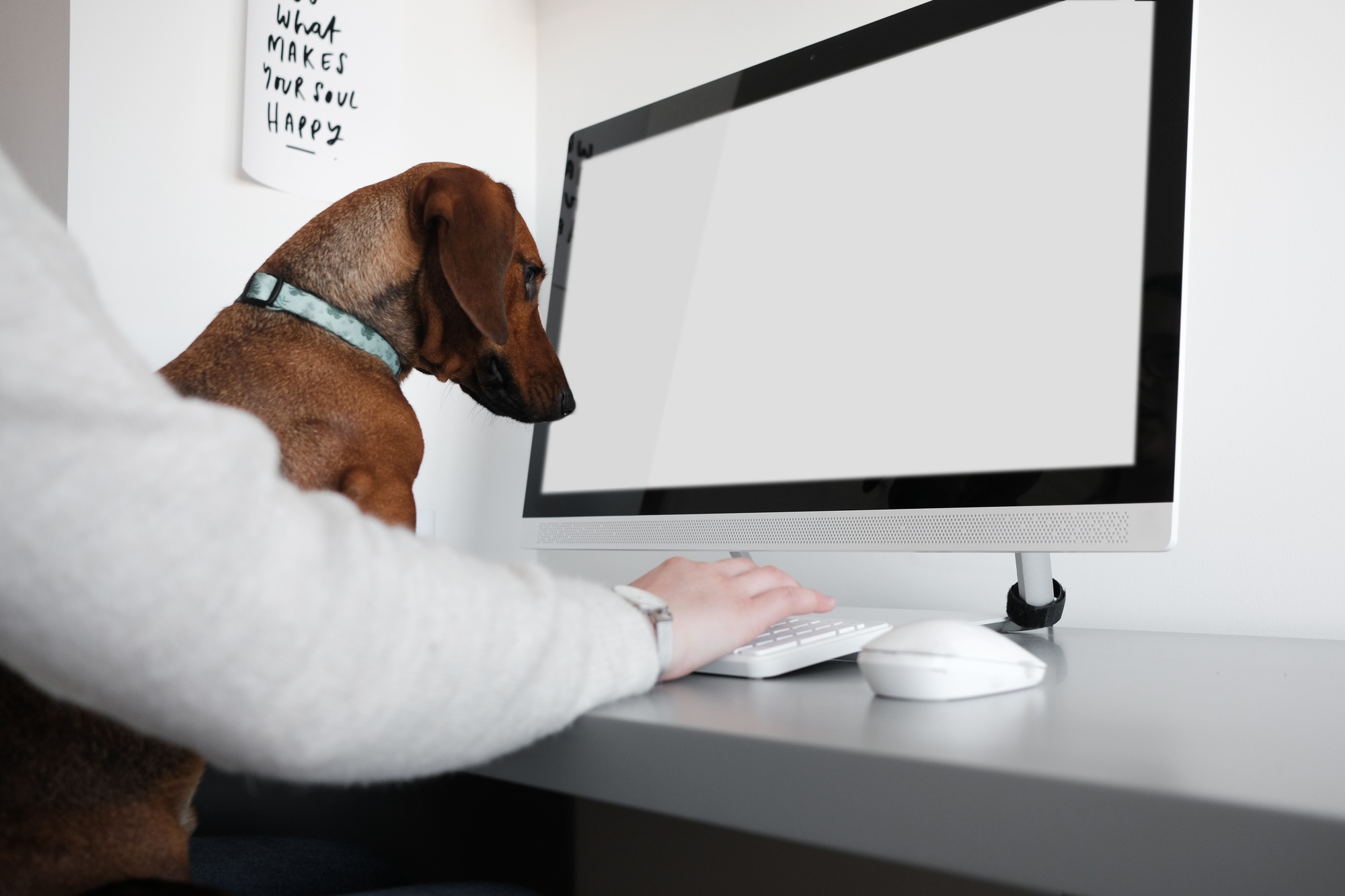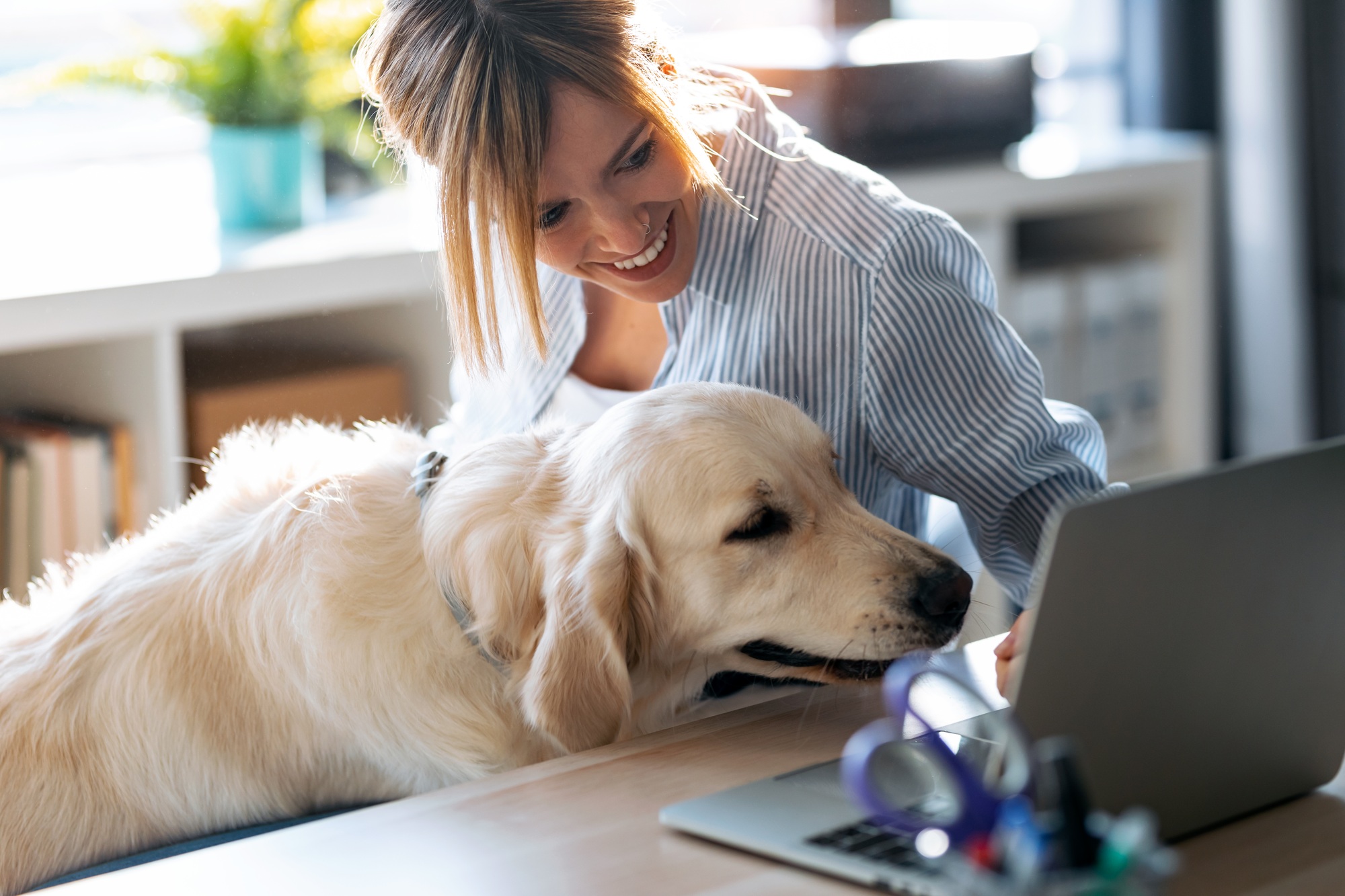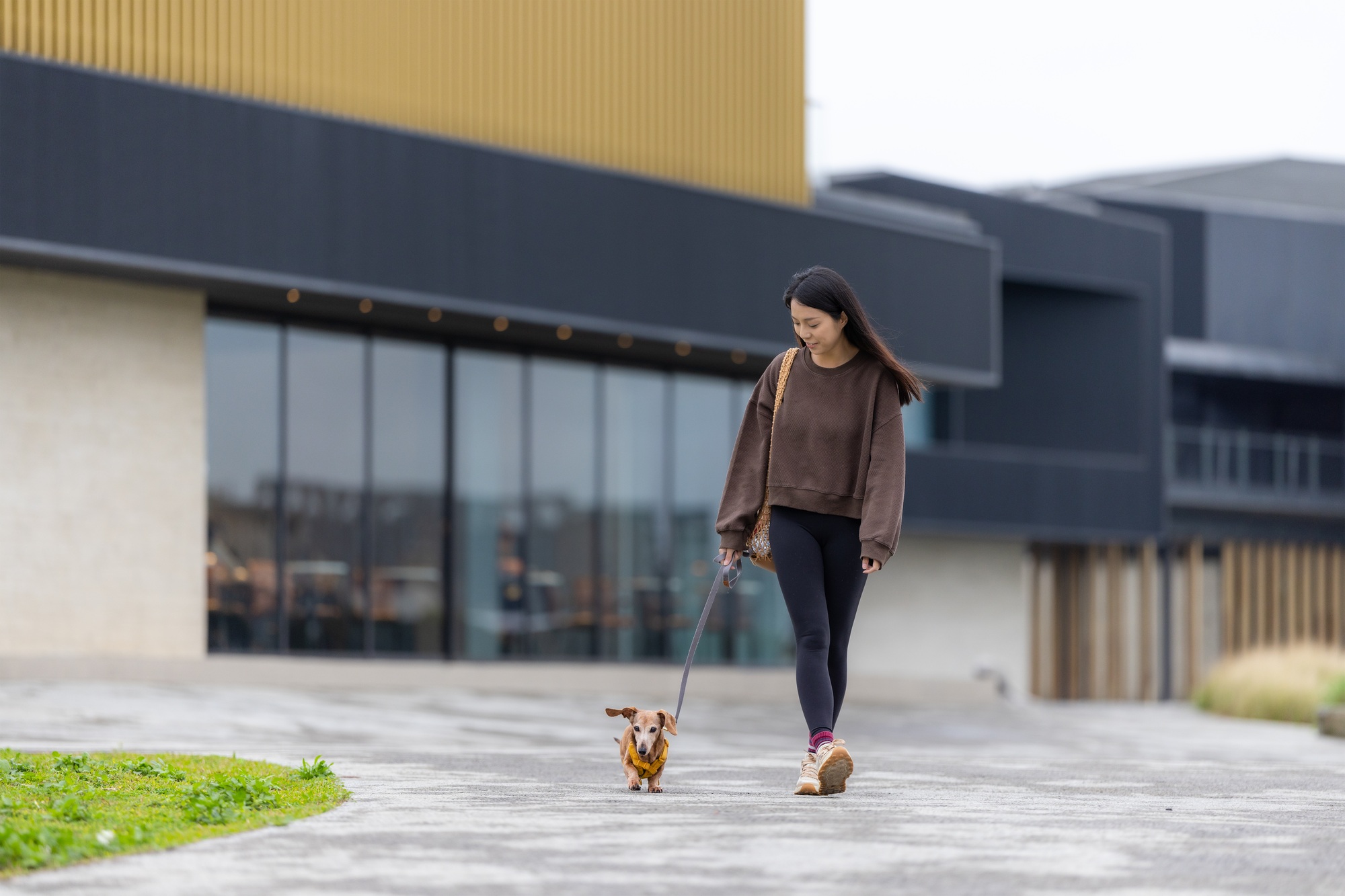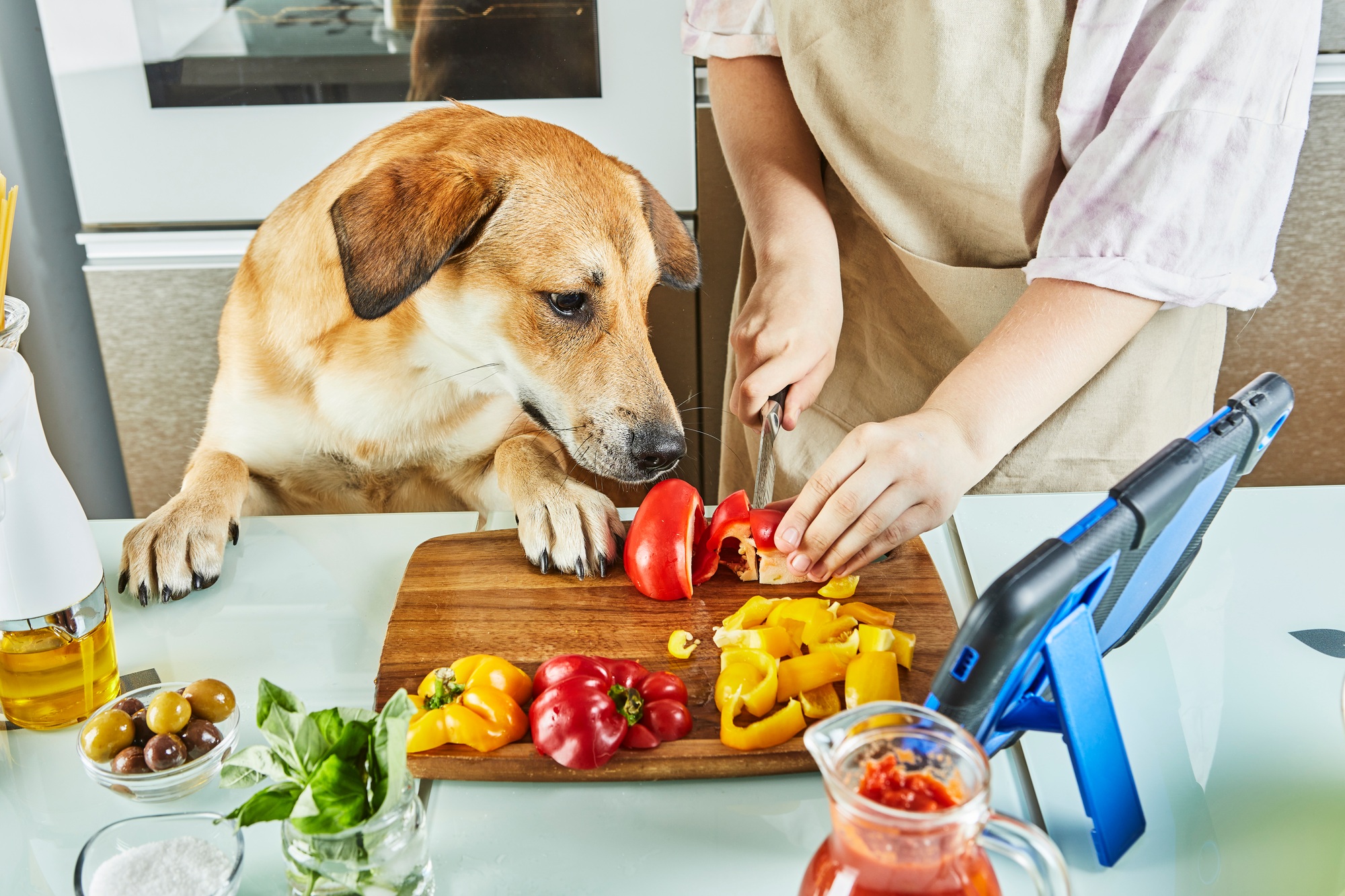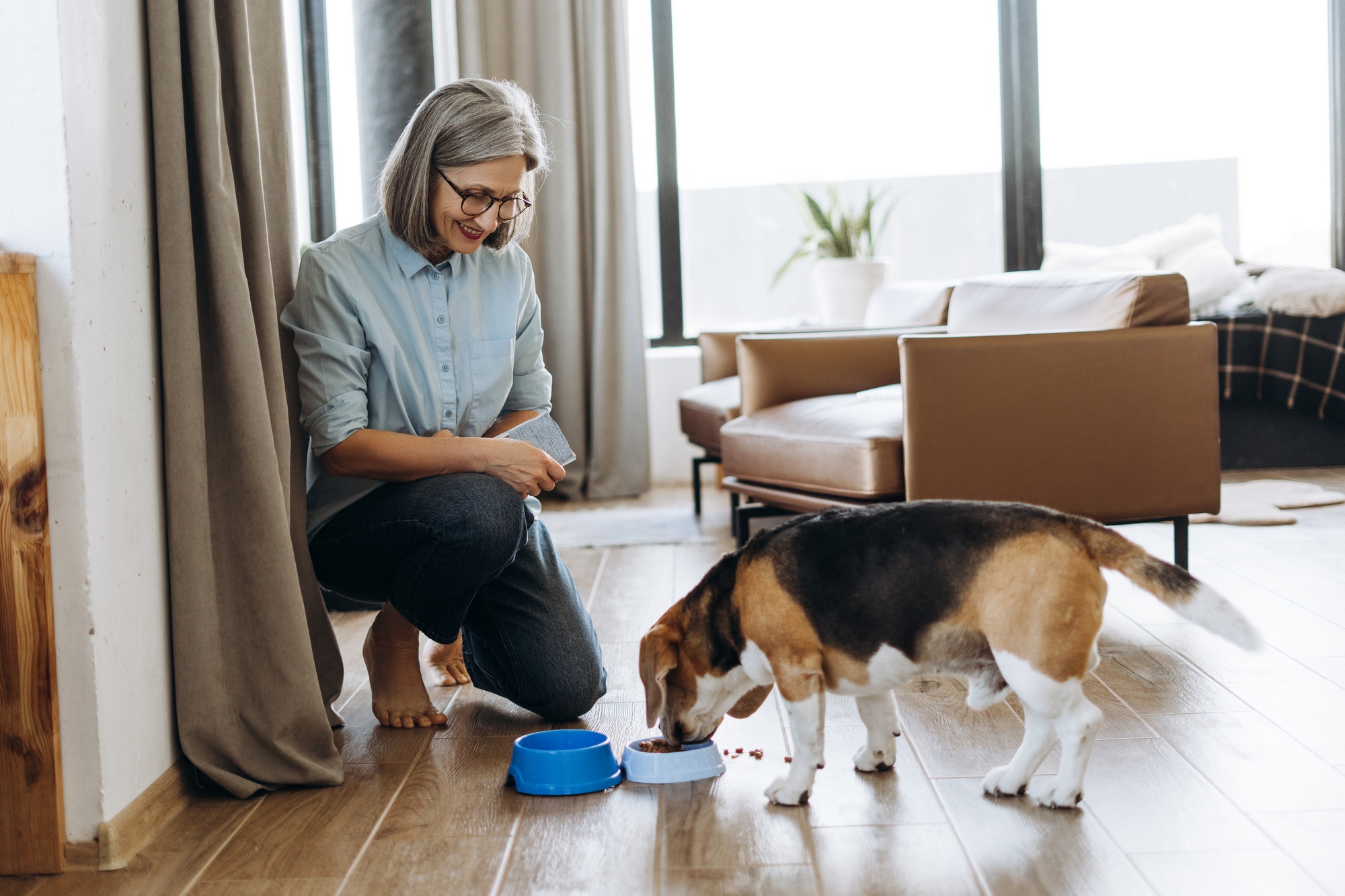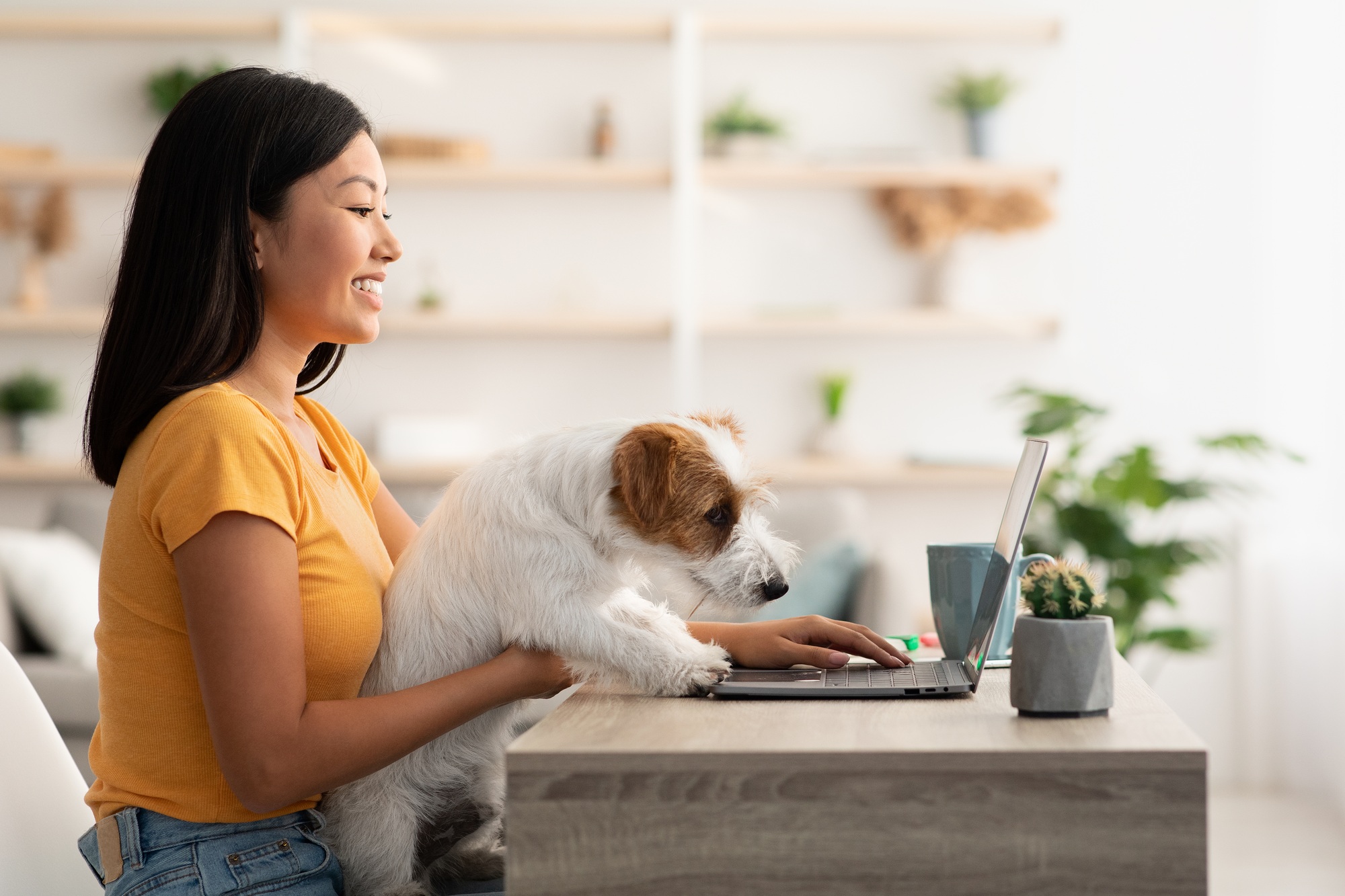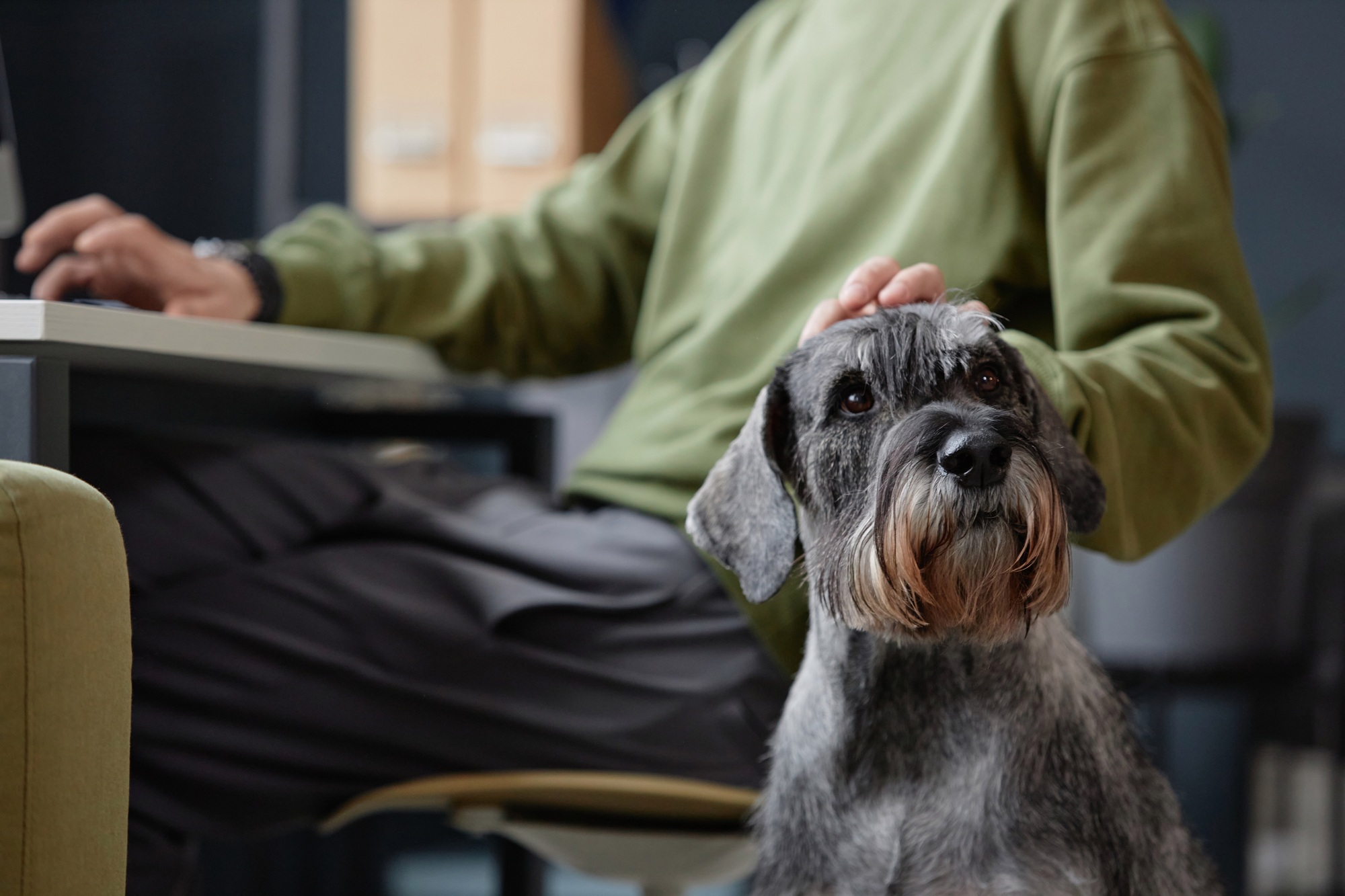
In today’s fast-paced, screen-focused world, many of us spend hours at our desks for work, often without realizing how sedentary our lifestyle has become. While this lack of physical movement affects us, it also impacts our pets—especially dogs who are often lounging nearby while we work.
Long periods of sitting can lead to several health issues for dogs, from obesity to joint problems. Just as humans need breaks to move and stretch, so do our furry companions.
We’ll explore how prolonged sitting can affect your dog’s health and offer practical tips on how to keep your dog active and healthy while you’re working from home or the office.
1. The Impact of Prolonged Sitting on Your Dog’s Health
1.1 Obesity and Weight Gain
One of the primary risks of sitting too long is obesity, and this applies to dogs as well. When your dog is inactive for long periods, they are at risk of gaining excess weight, which can lead to a variety of health problems, including heart disease, diabetes, and joint issues. Dogs, like humans, need physical activity to burn calories and maintain a healthy weight. Without regular exercise, their metabolism slows down, and they can quickly gain weight, even if they’re not eating more.
Obesity is especially dangerous for dogs as it places additional strain on their joints and organs. For example, overweight dogs are more likely to suffer from hip dysplasia or arthritis, conditions that are painful and affect their mobility. In addition, carrying excess weight can reduce your dog’s energy and overall quality of life.
1.2 Joint Problems and Arthritis
Sitting for long hours can cause stiffness in your dog’s muscles and joints. This is particularly concerning for older dogs or those with existing joint conditions like arthritis. Lack of movement can lead to further stiffness, making it harder for your dog to get up, walk, or play when the time comes. Over time, the inactivity can worsen joint pain and affect their mobility.
Regular physical activity keeps your dog’s joints flexible and muscles strong, helping to reduce the likelihood of developing conditions such as arthritis. Taking time for short walks or stretching exercises can also aid in maintaining joint health and improving flexibility, ensuring that your dog remains active for years to come.
2. Why Dogs Need More Than Just a Few Hours of Playtime
2.1 Mental and Physical Stimulation
Just like humans, dogs require both mental and physical stimulation throughout the day. While a long walk or a game of fetch is great, it’s not enough to keep your dog healthy if they’re sitting around the rest of the day. Dogs need frequent bursts of activity, including play and walks, to stay sharp and physically fit. Without regular stimulation, they can become bored, anxious, or develop behavior problems.
Interactive toys, regular short play sessions, and mental challenges (such as puzzle feeders) are great ways to keep your dog engaged. By scheduling small activities throughout the day, you can prevent boredom and reduce the negative effects of a sedentary lifestyle.
2.2 Balancing Work and Dog Care
For many remote workers or those with flexible schedules, the temptation to sit for hours at a time is strong. However, this also means your dog may be lying still with you, missing out on the exercise they need. To keep your dog’s health in check, it’s important to balance your work with pet care. Scheduling regular breaks and taking the time to get up, walk your dog, or engage in a quick play session will help both you and your dog stay healthy.
Dogs are social animals that thrive on interaction with their owners. When you take time for them, they not only get the exercise they need but also feel emotionally fulfilled. Creating a routine that includes both work and play for your dog ensures they remain engaged and healthy, preventing the negative effects of sitting for too long.
3. Preventing Health Issues: How to Keep Your Dog Active During Your Workday
3.1 Use Breaks for Walks and Play
One of the simplest ways to keep your dog active during the workday is by using your breaks for walks and playtime. Just like you, your dog benefits from short bursts of exercise. Whether it’s a 10-minute walk or a quick game of fetch, these activities help your dog burn off excess energy and stay fit. A mid-morning or afternoon walk can also give both of you a mental break, refreshing your mind and your dog’s body.
Even on days when your schedule is tight, stepping outside with your dog can make a huge difference. Taking the time to get up from your desk and enjoy a brief walk with your dog not only benefits their health but also allows you to recharge for the tasks ahead.
3.2 Encourage Movement Indoors
If stepping outside isn’t always possible, you can still encourage your dog to move indoors. Consider setting up a small play area or use toys that encourage your dog to move around. Tug-of-war, hide-and-seek, or puzzle toys that require them to solve problems for treats are all great ways to engage their mind and body.
Another way to encourage movement indoors is by using treat-dispensing toys that keep your dog active while also rewarding them. These toys can engage your dog in movement while you remain focused on work. Indoor play is a great option, especially when the weather outside isn’t conducive to outdoor walks or when you’re unable to step away from your desk for long periods.
4. Creating a Pet-Friendly Work Environment
4.1 Designate a Play Area for Your Dog
Setting up a pet-friendly work environment doesn’t just mean having your dog nearby; it also means creating space for them to move and play. Designate an area in your home or office where your dog can safely play or rest while you work. This ensures that they have a comfortable and safe space where they can stretch out, play, or relax without interrupting your workday.
Having a specific area for your dog to engage in activities can help keep them entertained, especially if you’re on back-to-back calls or focused on a project. This space also helps your dog feel secure, knowing that they are close to you while also having the freedom to move and play.
4.2 Invest in Pet-Friendly Equipment
Consider investing in pet-friendly equipment that can help your dog stay active. For example, a treadmill for dogs or a dog-friendly exercise ball can be fun ways for them to get some exercise indoors. These tools are particularly useful if you live in an area with extreme weather or have limited outdoor space.
Adding these elements to your workspace not only helps keep your dog physically active but also ensures they have an outlet for their energy while you’re working. Even if you’re tied up with work, these pet-friendly tools can keep your dog engaged and moving.
5. Monitor Your Dog’s Health Regularly
5.1 Keep an Eye on Their Weight and Mobility
It’s important to regularly monitor your dog’s health, particularly their weight and mobility. Check for signs of weight gain, stiffness, or any difficulty in movement. If you notice your dog becoming less active, it might be a sign that they’re not getting enough exercise.
Consulting with your veterinarian can help determine a proper exercise routine based on your dog’s age, breed, and health status. Regular checkups and staying on top of their weight can prevent many of the health issues that arise from a sedentary lifestyle.
5.2 Prevent Joint and Muscle Issues
Joint and muscle health are critical to your dog’s overall well-being. If your dog is showing signs of discomfort or stiffness, it could be a sign that they are not getting enough movement. Taking regular breaks for walks, play, and stretching can help prevent joint issues like arthritis. If your dog is older or suffers from joint pain, be sure to adjust their exercise routine accordingly.
Additionally, providing comfortable bedding and orthopedic options for older dogs can improve their comfort and reduce the risk of muscle and joint strain. Keeping your dog active and healthy is a long-term investment in their happiness and quality of life.
Conclusion
Sitting for long hours may be a common part of your workday, but it shouldn’t be for your dog. A sedentary lifestyle can negatively affect your dog’s health, leading to obesity, joint problems, and emotional distress.
By taking regular breaks to walk, play, and engage with your dog, you can ensure they stay active and healthy. A well-balanced routine that includes exercise, play, and care will not only benefit your pet but also enhance your own productivity and well-being.



